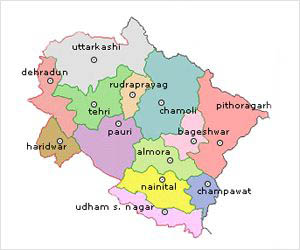Basanti: A Garhwali Drama
(Review of ‘Basanti’ a Garhwali Drama by Vishwambar Datt Uniyal)
(Garhwali Dramas, Kumauni Stage Plays, Dramas of Uttarakhand, Himalayan Dramas)
Vishwambar Datt Uniyal (Uniyal Ganv, Saklana, Tihri Garhwal, 1904-1945) was the first Indian who became the member of Mossurie Municipal Corporation.
Vishwabar Datt Uniyal published a social Garhwali drama ‘Basanti ‘from Uttarakhand, press, Dehradun, 1932 and dedicated the book to late Mahant Lakshman Das Ji of Guru Ram Rai Sahib.
Basanti is about five acts and fourteen scenes. The drama is idealistic and with clear objectives that society should stop mismatch marriage (old man and young female), the youth should have Neetivan and should have good conduct, and the saint should act always in selfless behavior.
The story is about parents of Basanti from a village who are worried about marriage of their young daughter and as the prevailing custom of that time are ready to marry her daughter to an old man. The parents feel that their duty is limited just to marry their daughter. The parents of a young man Hari Singh are also worried about marriage of their unmarried son. Well educated Hari singh is rebellion in Dehradun and fights many battles against wrong people or social evils. At the end hari singh and Basanti are engaged. There are other characters to develop the drama as saint, pundit and Gatti. Gatti is badi and sings song in the drama. The drama has many folk songs for expressing emotions which can’t be expressed through dialogues or prose.
Basanti drama is successful in showing the struggle of parents who are worried about their children marriage. The acts of Hari Singh preach for requirement of idealistic youth in the society with least preaching speeches.
The dramatist took care in developing characterization of the characters.
The dialogues are as per the nature of characters. The dialogues are effective and provide speed to drama as –
Basanti – didi !dekh dhaun hindu logun ma kano buro rivaj ch ki naunyun byau budyaun se kar dendan. Bhai ! ina karan se t jai din hweai vai I din baghai dyon t acchho rhee. Jindagi bhar ka ron dhon se t ni hon hi bhalo.
Or
Gatti- d1 thakuru ki chhween sunaan. Mai sani abi teen beesi ar paancho baras lagyun thakuro! Log t assi pichaasi baras ma byau kardan maaraaj
The chorus song at the end of drama is an example of imagining power of Vishwambar Datt Uniyal.
Hari Datt Bhatt Shailesh states that due to its dialogues and social needs, the drama was staged many times. Bhatt informs the people were influenced by the theme of this drama. The drama is less literature and is more of communication medium. Basanti drama worked well in its time to influence people going against mismatched marriages custom.
References:
1-Dr Anil Dabral, Garhwali Gady Parampara
2-Abodh Bandhu Bahuguna, Gad Myateki Ganga
3-Dr Sudharani, Garhwal ka Rangmanch
4-Drama special issue of Chitthi Patri magazine
5- Dr Hari Datt Bhatt Shailesh, Garhwali Natak evam Rangmanch: Ek Vihngam Avlokan
6-Dr Bhakt Darshan: Barrister Mukandi Lal Srmriti Granth
Copyright@ Bhishm Kukreti



